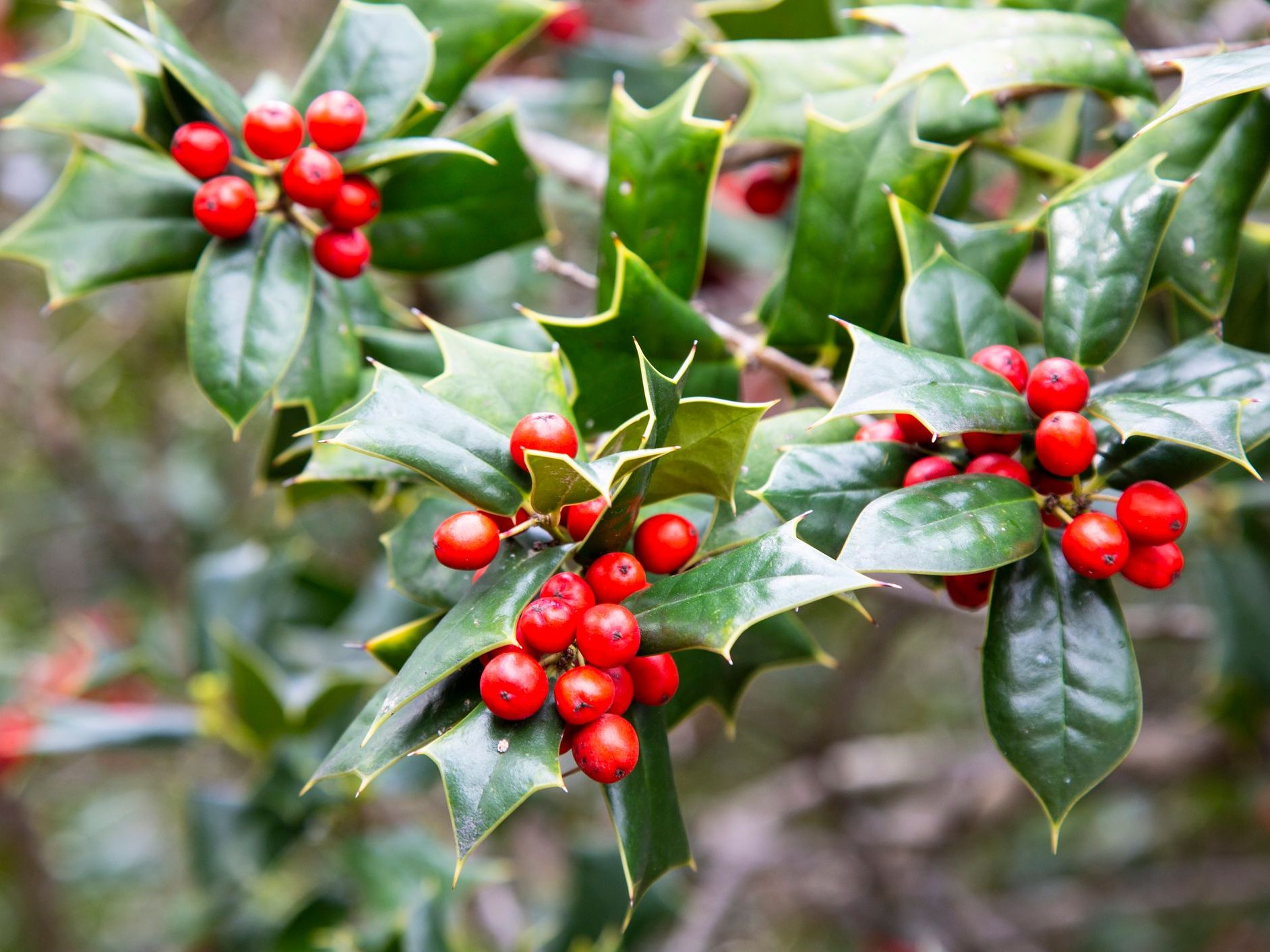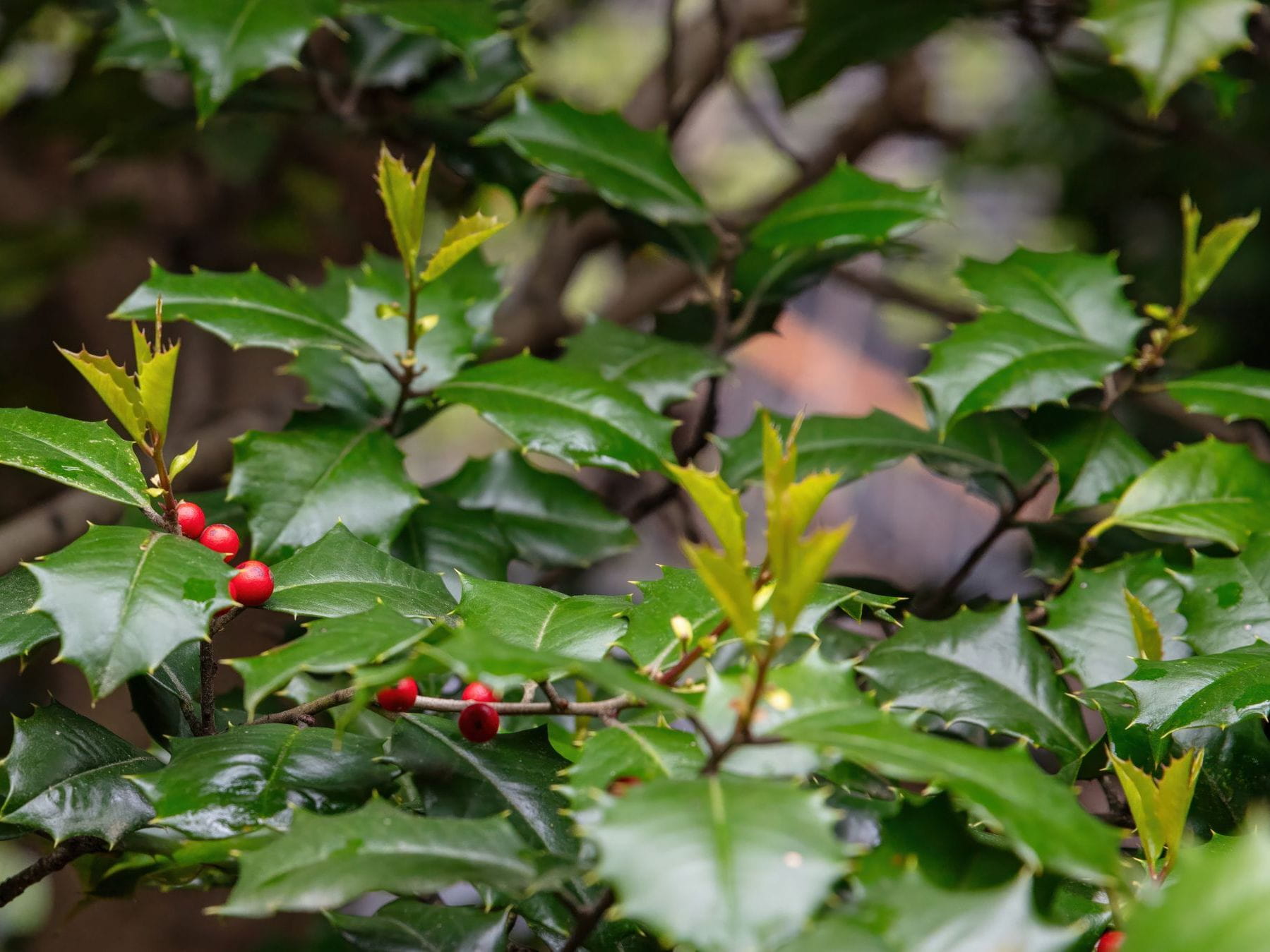Not Just the Berries: Be Wary of Holly Leaves and Roots

The Bottom Line
The leaves of the holly (Ilex spp) are dark green and stiff with sharp spines. The root is large and grows straight down. The leaf spine can lacerate the mouth, throat, and skin. Holly contains poisonous substances that cause abdominal pain, vomiting and diarrhea and sometimes dehydration when ingested. Mild symptoms require no specific treatment other than remaining hydrated.

Identifying holly leaves and roots
The most common forms of holly are English holly (Ilex aquifolium) and American holly (Ilex opaca). Holly can be a small shrub or a tall evergreen tree which can grow more than 40 feet. It does not shed leaves in the winter. Leaves are oval or elliptical, stiff, shiny and dark green with several sharp spines on each side. The root is deep, with one large root that grows straight down. There are also smaller roots that spread out. Its berries are about ¼ inch in diameter and vary in color from bright red to yellow.Are the leaves and roots of holly poisonous?
The entire plant is poisonous. Saponins, polyphenols, alkaloids (such as ilicin), steroids, cyanogens and methylxanthines (such as theobromine) are potentially toxic substances in this plant.Symptoms of a potential toxic exposure
The spines on the holly leaf can lacerate or puncture the mouth as well as other parts of the gastrointestinal tract. If swallowed, the leaves can cause gastrointestinal symptoms including nausea, vomiting, diarrhea, and abdominal pain. If vomiting and/or diarrhea is severe, dehydration and electrolyte abnormalities are possible. A saponin in the leaves has hemolytic activity but hemolysis (destruction of red blood cells) is not a common effect from ingestion. Skin toxicity involves mechanical irritation as well as dermatitis.Believe you or someone has had a toxic exposure to holly?
If you or someone has ingested a holly leaf, look for injury in the mouth and determine if there is pain in the throat or chest that might indicate a tear or puncture. Remove any leaf residue, rinse out the mouth, and drink a small amount of water.
If mild gastrointestinal symptoms occur, no specific treatment is needed other than remaining hydrated. If vomiting or diarrhea is profuse, medical attention may be required. If the spines irritate or puncture the skin, clean the wound with soap and water, put a band aid on it, and keep the wound clean. Depending on the extent of injury, applying antibiotic ointment may be recommended. Help from experts is available through the webPOISONCONTROL online tool and by phone at 1-800-222-1222. Poison Control’s expert guidance is always free, confidential, and available 24 hours a day.
Clinical Toxicologist
Poisoned?
Call 1-800-222-1222 or
Prevention Tips
- Keep holly leaves up, away, and out of sight of children.
- Be careful when cutting or otherwise handling holly leaves to avoid lacerations.
- Wear garden gloves.
- If you have a holly wreath indoors, throw away leaves that dry up and fall off the wreath.
- Rake up old leaves on the ground outdoors.
- Avoid overwatering to prevent root rot.
This Really Happened
A holly wreath was hanging on the inside of the door of a house. After about 2 weeks, the leaves were drying out and starting to fall off. A 3-year-old boy picked up a leaf off the floor and before his mother could retrieve it, he swallowed it. The mother called Poison Control to check if this was a problem. Poison Control instructed the mother to check for any cuts or bleeding in the mouth and to remove any leaf parts if she saw them. The mother reported no cuts and told Poison Control that she had already removed the plant parts and given her son some water to drink. Poison Control told her there was a possibility of mild gastrointestinal upset and to keep her son hydrated if this occurred. The mother was told to call back if she had any other concerns. She did not call back and follow up by Poison Control was not necessary.References
Poisoned?
Call 1-800-222-1222 or
Prevention Tips
- Keep holly leaves up, away, and out of sight of children.
- Be careful when cutting or otherwise handling holly leaves to avoid lacerations.
- Wear garden gloves.
- If you have a holly wreath indoors, throw away leaves that dry up and fall off the wreath.
- Rake up old leaves on the ground outdoors.
- Avoid overwatering to prevent root rot.
